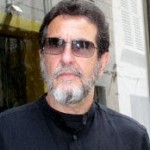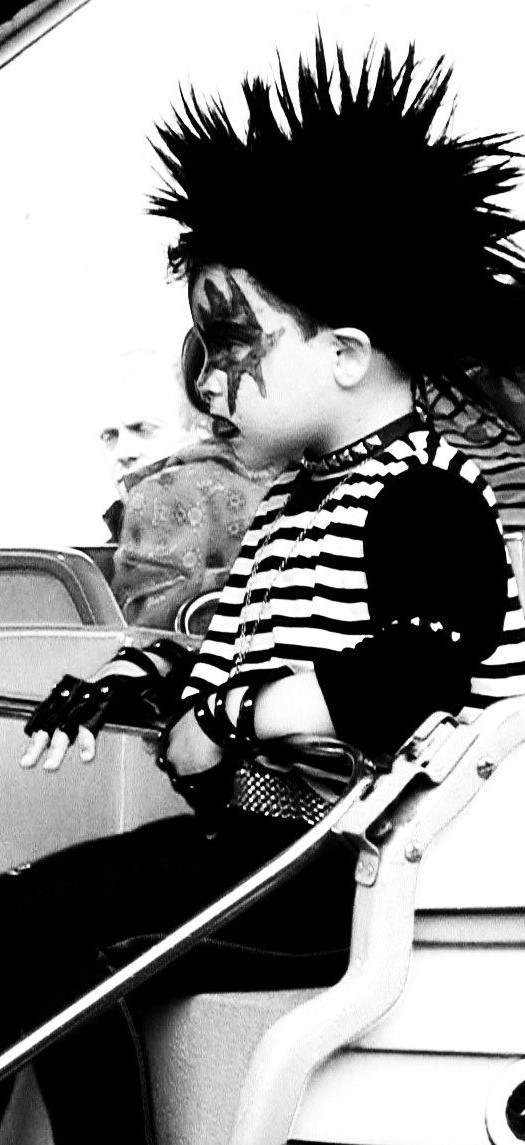 Harold Jaffe is the author of 23 volumes of fiction, novels, docufiction, and essays, most recently Anti-Twitter: 150 50-Word Stories, OD, Paris 60, Revolutionary Brain, Othello Blues, and Induced Coma: 50 & 100 Word Stories. His books have been translated in France, Spain, Italy, Germany, Japan, Cuba, Turkey, Romania and elsewhere. Jaffe is editor-in-chief of Fiction International.
Harold Jaffe is the author of 23 volumes of fiction, novels, docufiction, and essays, most recently Anti-Twitter: 150 50-Word Stories, OD, Paris 60, Revolutionary Brain, Othello Blues, and Induced Coma: 50 & 100 Word Stories. His books have been translated in France, Spain, Italy, Germany, Japan, Cuba, Turkey, Romania and elsewhere. Jaffe is editor-in-chief of Fiction International.
Hal, your novel Brando Bleeds covers a lot of ground in various forms in depicting Marlon Brando’s life, providing readers with a certain sense of insight into the man himself that goes well beyond our simple understanding of celebrity. Why did you choose Brando for your novel’s subject? Has his story been something you’ve wanted to address for a while?
Certain figures interest me, and they often seem to combine an unremitting cultural resistance with melancholy, compassion, and a coyote-trickster sort of humor. Odd-seeming combination, I know. With this “odd-seeming combination” in mind, I’ve written about Chet Baker, Hurricane Carter, Walter Benjamin, Leadbelly, Lady Day, Nina Simone, and–hold the phone–Charles Manson. Best not to believe what you’ve heard about Manson.
I think of Brando in a similar vein as one of my (reimagined) humans.
The chapters excerpted here, “Hair” and “Lino1” are quite different in many ways, but “Hair” deftly relates something Lino mentions in the latter excerpt: “Though he was notoriously inconsistent, Brando’s heart always bled for the underdog, foundling, stray, like I said.” Brando, one would guess, had his fair share of stalkers , but did his bleeding heart sometimes even extend to those who may have revered him, but also sought to kill him?
Yes. Absolutely.
“Lino 1” relates some of Brando’s activist efforts, including those with the Black Panther Party and American Indian Movement (AIM). Do you think this was an important aspect of his life that many people might not appreciate—or even be aware of?
Were Brando not a social activist, I wouldn’t care for him as I do. His attempts to change and heal, however ineffective they were finally, are integral to who he was.
Brando Bleeds brings readers into the actor’s storied life through a wide variety of fictional forms—interviews, letters, scripts, etc. How did the various narrative methods come about? Was there a fair amount of tinkering involved?
Not much tinkering. I wrote the novel for a, so to speak, mainstream audience, so there are fewer stylistic deviations than usual. I employed more drama- and film-script-like chapters because of the theatrical/filmic milieu in which Brando moved—though did not breathe.
At what stage is the novel? Are you still polishing it and/or actively seeking an agent or publisher for Brando Bleeds at the moment.
It can use some tweaking, but it is certainly in shape to be read. It has been agented in New York for the last several months.
What other creative projects have you got going these days?
Several things. My collection of fictions & docufictions called Death Café will come out in January (Anti-Oedipus Press). I am completing another collection called Cassandra. I will be in northern India for nine or ten weeks this winter and mean to write a fictionalized journal, such as I did with Paris 60. I spent a year in India as a Fulbright scholar years ago, and I have been reading in Hinduism and Buddhism for a long time. I will mostly be staying in the Hindu holy city of Varanasi (also called Benares), and am looking forward to it.
Thanks, Hal. Is there anything else you’d like to share or explain to readers?
Not right now. Thanks for your continued interest in my writing.
